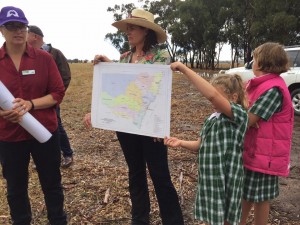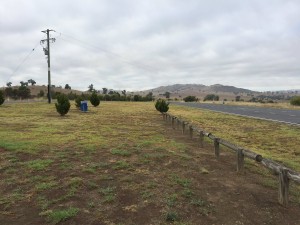New South Wales: On this day we left Canberra at 7am and traveled south and west to what is known as “irrigation country.” The scenery reminds me of a drive from Sacramento to Ione (Amador County). Our stops included a visit with representatives of Coleambally Irrigation, a farmer-owned co-op. The district encompasses 491 irrigated farms producing rice, wheat, corn, cotton, barley, soy beans, canola, and a variety of fruits and vegetables. We received an on-the-ground look at water reforms, featuring a system that runs on solar power and includes broadband communications. Water orders can be met within 2 hours and there is precise regulation of flows, precise measurement, and automated water accounting.
We saw first-hand that farmers here have embraced solutions beyond water management. LandCare is a grass-roots conservation program that partners with landholders to plant trees, foster biodiversity, capture soil moisture, and protect waterways. The program connects students, families and retirees to natural resources through community events. Cost share funding for restoration projects comes through federal and state government grants.

Representatives of LandCare provide an overview of their regional work with a map of New South Wales.
LandCare has expanded its focus to include community engagement events to address increasing mental health issues in rural farming communities. The social aspect of land stewardship is a critical component of healthy communities and shows the true value of resource management and restoration on the land.
As we continue our work in California to adapt to climate change and manage our way through a drought that, believe it or not, is still with us, there is much to learn in Australia. The country endured its own epic drought from 1995-2012 and has developed strategies for sustainability that are the reason for our visit.




One Response to Impressions of a vast, dry continent – Climate Smart Agriculture Mission to Australia